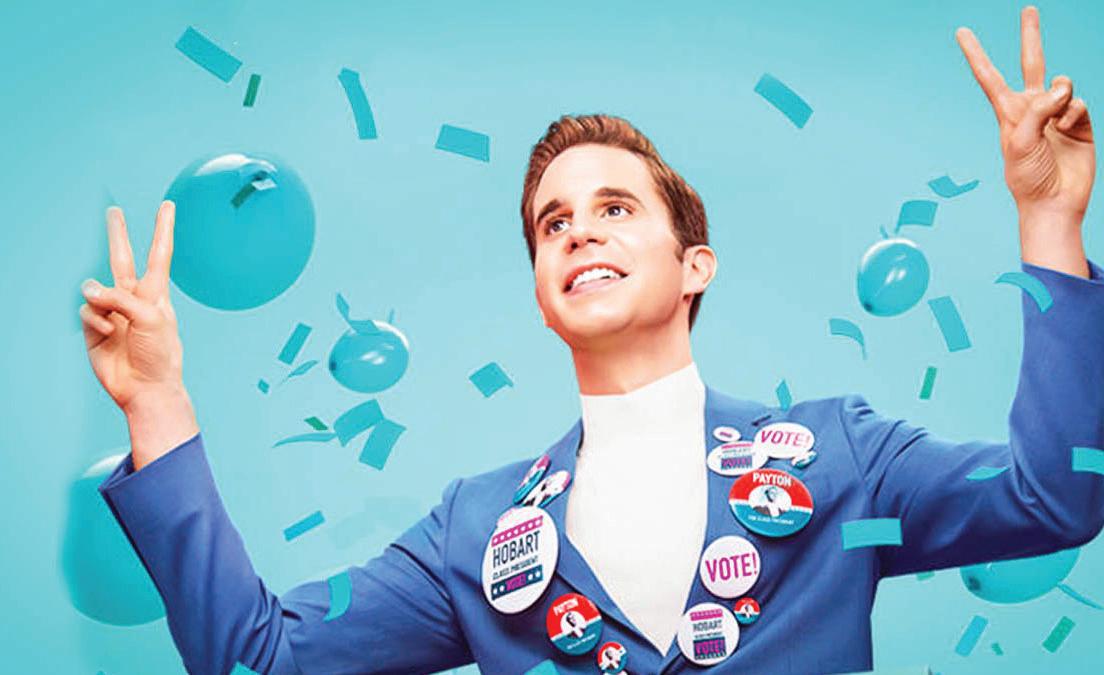
31 minute read
Anti-Blackness and Biphobia - In Netfix’s “The Politician
AntiBlackness
WRITTEN BY
Advertisement
Lynn Nichols Thinking critically about modern satire
“The Politician” season two premiered on streaming video this summer. For those who have not yet seen the series, the Netflix original created by Ryan Murphy stars Ben Platt as Payton Hobart, a young man from a rich family whose life ambition is to become the president of the United States. The series includes deeply emotional moments, but its general tone can be described as a satire, lampooning teenage melodrama and the self-absorbed wealthy. It has also been praised for diverse representation of LGBTQ+ people and people of color in the main and supporting cast. The first season follows Payton in his senior year of high school as he runs for student body president. His opponent, River Barkley (David Corenswet), is also
Biphobia
In Netflix’s “The Politician”
a love interest for Payton, which already sets up a twisty, soap-opera plot at the outset of the show. But when River commits suicide in the first episode, his bereaved girlfriend Astrid Sloan (Lucy Boynton) decides to run in his place, kicking off a cutthroat presidential race. Ultimately, Payton wins the election, but his short-lived term comes at great personal cost to him and everyone in his life.
Still, Payton survives into his emerging adulthood, and season two tells the story of his next election for a seat in the New York State Senate. He jumps into the Democratic primary to challenge Dede Standish (Judith Light), a seemingly unshakeable incumbent. Early in the race, a member of Payton’s campaign staff uncovers a secret in the senator’s personal life:
she and her husband Marcus (Joe Morton) are both in a long-term, three-way relationship with another man. One of Payton’s many moral dilemmas this season is whether he should use this information to win the election. However, upon closer examination of the new season’s content, the most problematic aspect of the show lies in badly-written and harmful characterization. Season one was not the pinnacle of representation that reviews and marketing claimed it to be, and season two completely fails to accurately represent people from marginalized groups, especially the Black and bisexual characters.
The show has involved racist writing since its inception, as seen in the character of Skye Leighton (Rahne Jones). Skye is a passionate activist who strives to improve life for women, people of color and the LGBTQ+ community. In season one, she is Astrid’s running mate, but she becomes disenchanted at the last moment and signs on as Payton’s vice presidential candidate. She helps Payton in the last leg of the election race, but once he’s in office, she tries to assassinate him with a poisoned cupcake. When her girlfriend McAfee Westbrook (Laura Dreyfuss) finds out, she is horrified and calls the police to arrest Skye. What makes this fantastical sequence more disturbing is that it reinforces negative stereotypes.
White women like McAfee and Astrid are perceived by default as soft, delicate and pure, so portraying them as ruthless strategists breaks stereotypes. But Black women are already portrayed as aggressive and “angry” in materials ranging from racist caricatures to white feminist theory. This one-dimensional characterization might have been avoidable if Skye had more screen time to develop as a complex person, but that doesn’t happen: besides her aspirations to achieve social change and her short-lived romance with McAfee, viewers know nothing about her. Skye is the only Black character in the main cast, and the only recurring Black female character in the series, so the negative portrayal is especially harmful.
Season two involves even less character development and screen time for Skye. In one scene from episode two, “Conscious Unthroupling,” she struggles and then fails to remember the name of her date (part of a running gag about how she goes out with many women in rapid succession). A montage of the characters’ personal lives since the last season includes a brief scene and snide voiceover comment about Skye’s habit of sleeping with her college professors. When she isn’t being ridiculed as hypersexual in her own narrative, she is enlisted to support the narrative of the white characters. Episode three, “Cancel Culture,” incorporates an earnest monologue in which Skye instructs Payton on how to properly atone for racist actions in his past. But plots where a lone character of color works to educate the white lead are questionable in their own right, and any potential teachable moment is undercut by the fact that the entire scandal was orchestrated by Payton and his team for a political strategy.
The only other recurring Black character in season two is Marcus, Dede Standish’s husband. There are parallels to the writing with Skye, namely that Marcus is a college professor shown to have affairs with his younger, male students. Every character in “The Politician” is flawed, and the plot is driven by shock value and scandal, but why are the Black characters in particular shown engaging in inappropriate power dynamics? Marcus is also written poorly as a bisexual man. His sexual identity goes unlabeled in the show, but since he is in a committed marriage with his wife Dede and has relationships with multiple men, he is likely somewhere under the bi+ umbrella. In the last episode of the season, after Dede and Marcus choose to separate, Dede’s campaign advisor Hadassah Gold (Bette Middler) remarks that he “clearly leans very heavily towards the gay end of the Kinsey spectrum.” It’s as though his preference for men makes any other label irrelevant. That a Black, bisexual man is written as hypersexual and unfaithful to the point of ending his marriage enforces an anti-Black and biphobic trope, made worse by not-so-subtle bi erasure.
Season one was praised for a story where it seemed that “everybody’s bi,” but in season two, the writers seem to be arguing that nobody is really bi. Payton, his former rival Astrid and his long-term girlfriend Alice Charles (Julia Schlaepfer) have a polyamorous relationship for part of the season at Alice’s suggestion. However, her reasoning is that they should observe Astrid and keep her close as a potential political liability. Selfishness and manipulation do not make for a stellar portrayal of bisexual people. Moreover, the relationship with Payton is the only context in which Astrid and Alice are depicted as bisexual. One of the many obstacles facing bisexual women is the misconception that their attraction to women exists only for the sexual gratification of men, and the assumption by straight men that bisexual women are always available for group sex. Yet, this is the primary narrative focus for the bi women in the cast.
Payton’s colleague McAfee and his mother Georgina have relationships with men and women in this season, but their identities are never discussed in detail, and their relationships with women are shown only in brief montage and voiceover sequences. Furthermore, two of the four bi women in the main cast end the season in relationships with men, and the other two remain single. Bisexual women who date and marry men are still bi—to claim otherwise is bi erasure—but with multiple bisexual female characters, why are there no central, endgame romantic relationships between women? “The Politician” is only willing to depict female bisexuality as a quirk or as a fetish.
Even the title character is subject to biphobic writing. Payton’s relationship with River is central to the plot of season one. He was definitely attracted to River, and their brief time together was framed as a complicated romance. But season two revises this history, describing their relationship as a mostly spiritual, transcendent one. During a tearful conversation with Astrid in “Conscious Unthroupling,” Payton reflects on his relationship with River. “I wasn’t attracted to River in that way,” he says. “I knew he wasn’t gay [. . .] I don’t even think he was bisexual,” he adds a few moments later. So, River never decided to come out or label his sexuality. Is it necessary to show two of the main characters speculating on the sexuality of a dead man—not only a dead man, but a teenager who shot himself? And is it helpful to the community of gay and bisexual men to rewrite a loving relationship and claim that it was never sexual? Just as sex and attraction between women shouldn’t be fetishized as entertainment, sex and attraction between men shouldn’t be dismissed as something impure.
Payton’s specific denial illustrates the writers’ contempt for bisexual identity. In the entire sevenepisode season, this conversation is one of only two instances where the word “bisexual” is used. The other time is in reference to William Ward (Teddy Sears), the man in a ten-year relationship with Dede and Marcus. William is a minor character who ultimately leaves his partners and reveals damning information to their political opponents. In this series, “bisexual” is a dirty word, reserved for the duplicitious, indecisive and sidelined.
In its entire run, “The Politician” has never set out to be a moral example for its viewers. It’s a satire first and foremost. The sometimes dry and often bizarre writing shines when it points out the selfishness of the wealthy or the corruption of the political establishment. But Black people and bisexual people are already criticized by society and falsely accused as threats to public morality. Drawing on widespread stereotypes of oppressed groups is not “edgy,” brave or unique: it’s cruel and lazy writing. All creators must be held accountable for their harmful actions, even—and especially—when “it’s just a joke.”
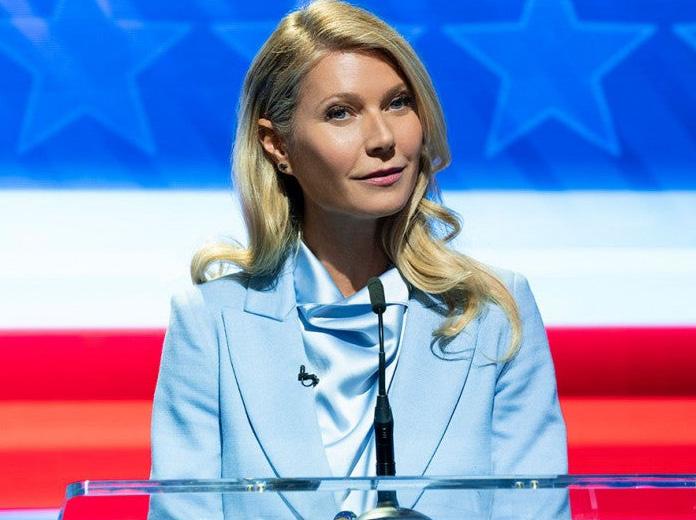
FUTURE OF FESTIVALS CONCERTS &
WRITTEN BY
Megan Baranuk
ILLUSTRATIONS BY
Hannah Mosley
The days of mosh-pitting, crowd surfing and bumping up against sweaty strangers seem to be far behind us. The mere thought of being in an area with barely inches between you and the person next to you is enough to make most people squeamish in today’s climate. This leaves most with a longing for the ways the world used to be. Nostalgic for festivals, concerts and music events of all types, music junkies have many alternatives to provide them with a quick fix. Exploring what festivals and concerts may look like in the future includes many different possibilities, some being implemented today.
The first alternative to concerts that was seen during the pandemic was virtual, at-home concerts. These are intimate concerts performed within the artists’ homes, studios or other secluded spaces. Concerts performed in this fashion are more intimate and bring brand-new versions of live entertainment that had never previously been so easily accessible. Concerts and festivals have taken a hit due to the pandemic. Here, virtual alternatives that have been implemented are explored.
Though this may seem more personal than an average concert, avid concert goers are quick to point out the similarities to watching a YouTube video or similar footage. This hinders the ability for fans to feel as though this concert is truly intimate—something that’s never been experienced in quite this way—as millions have access to these live performances at any p However, livestreaming on different platforms does have its disadvantages. The electrifying quality of sharing the same space with an artist is completely eliminated, as is the connection with fellow fans. One fix for connection is Instagram Live concerts. Thanks to advances in social media, artists have used the Live feature on Instagram to perform live concerts for their fans. In the livestreams, fans are able to interact by commenting, though it’s no substitute for face to face interactions. Rex Orange County is one example of an artist who frequently livestreams mini concerts from his home onto Instagram. Viewers can comment and react in live time as Rex Orange
County performs their favorite songs. This alternative may provide viewers with connection and free viewings of a set of live songs, but it cannot provide the connection experienced in person.
Instagram isn’t the only social site that has been utilized in replicating concerts and festivals. Travis Scott became the first artist to put on a virtual concert through Fortnite during the pandemic, reaching a record of 12.3 million viewers. Bringing together that astronomical amount of people to experience the same event in the same way was almost unheard of before this event. During the days leading up to Travis Scott’s “Astronomical” concert, players of Fortnite could see a stage being set up on the island, complete with golden Travis head balloons/structures. During the actual event, the rapper appeared, larger than life, and stomping around the island, surrounded by psychedelic effects, as the audience viewed by floating underwater, in the air, and traveling the island.
In a similar event, The Weeknd put on a colorful concert display live on TikTok. This event drew over 2 million people, experiencing a virtual lights and laser show, a virtual version of The Weeknd, and live performances of his latest hits. This was a milestone for not only The Weeknd, but also TikTok. This was the platform’s first augmented-reality live broadcast, and gave the world a glimpse into possible future music events. The immersive virtual locale that The Weeknd performed in was decided by fans who viewed the livestream—at critical points in the concert, the fans were given options to vote on what they wanted to see next, and the algorithm would construct the hallucinogenic dreamscapes accordingly. While virtual streaming leaves no room for the in person experience, it does allow viewers to see their favorite artists in settings never deemed possible before. Garnering so many fans for a single show seemed impossible, but Travis Scott and The Weeknd’s creative solutions may be paving the way for a more universal festival and concert setting. As time goes on, virtual settings seem to be the best route taken by artists large and small. The virtual settings have many options set to be explored, and this gives startup tech companies (and pre-established companies) a chance to innovate new ways to connect fans and artists, as well as providing brand new ways to explore music. The possibilities are endless, especially when technology is involved. Artists can bring to life any type of set they want—with a much cheaper bottom line. The fans also have the possibility to tailor their own experiences, set up an avatar and experience virtual concerts in a plethora of ways. These types of virtual experiences also encompass individuals with all types of abilities and restrictions, who may not have been able to experience concerts/festivals prior to the pandemic.
The future of physical festivals and concerts remains uncertain, which is concerning for the wellness of the economy. While big-name artists such as Beyoncé, Taylor Swift and Jay-Z may be fine for now, smaller artists often depend on money made during shows, selling merchandise and building a fan base. Smaller artists who are left with little to no options in gaining traction and making a profit off of their craft are being severely affected by the pandemic. Not only this, but small artists often have no ties to large corporations or PR opportunities, as Travis Scott and The Weeknd do. For others involved in the live music industry, the total shutdown of live shows is a devastating blow. Event planners, festival workers and production crews are left in limbo as the world determines what live music will look like in the future.
The world continues to shift and adapt according to new developments each day, and the live music industry continues to change with the world. Other countries have begun to reintroduce live music festivals, and the United States can only hope to follow as soon as conditions are safe enough to gather in large masses. For now, let’s enjoy the new musical experiences that are inclusive for everyone during these times.
FUTURE OF CINEMA
WRITTEN BY
Megan Baranuk Lauren Koleszar
PHOTOS BY

Max Torres
Cedar Lee Theatre reopens, though the future of cinema remains uncertain.
Many small businesses and local attractions have taken hits throughout the course of the pandemic, but that didn’t stop Cedar Lee Theater from reopening on Friday, August 21, 2020. The theater, located in Cleveland Heights, opened its doors to the public for the first time since its shutdown during the pandemic. This is a big step for Cedar Lee, and allows movie goers to watch new and old movies alike. Cedar Lee often screens newer movies with a 2020 release date, as well as nostalgic movies. Currently, The Breakfast Club is one of the older movies you can catch on the big screen.
Cedar Lee Theater is unique for many reasons. It remains one of the only theaters in the area to feature art-house films that aren’t seen as options in mainstream theaters, sell baked goods, coffee, and imported beers and wine at the concession stand.
Clevelanders frequent this unique theater due to its distinction amongst other chain theaters. Cedar Lee
Theater is an extension of Cleveland Cinemas, which consists of four active locations at the moment; Cedar Lee Theater, Apollo Theater, Capitol Theater, and
Chagrin Cinemas.
Cedar Lee Theater opened its doors for the first time on Christmas Day in 1925, but wasn’t transformed into the theater it is today until 1983, allowing the theater to meet the demand for showing specialty films. The first film to ever be shown at Cedar Lee was a silent short movie called “The King on Main Street”. The show was paired with various shorts.
At the time, the theater had only 1,100 seats and one screen. In 1994, the theater went from two screens to six. The Cedar Lee Theater is known for showing specialty films, mainly independent and foreign films.
The theater hosted the Cleveland International Film
Fest in 1977, until Tower City Cinemas took over the privilege of hosting. An interesting tradition Cedar
Lee is particularly known for is screening the Rocky Horror Picture Show on the first Saturday of each month at midnight.
Cedar Lee’s reopening was a decision made with many safety precautions in mind. There will be social distancing markers in the lobby to ensure that guests are at least six feet away from each other at all times. The theater will be ensuring that there are touchless payment options for tickets and concessions, and buying tickets online in advance is highly encouraged for minimal unnecessary contact. Cedar Lee’s staff has their temperature taken each time they report for work, wear masks at all times, and frequently wash their hands. All surface areas will be disinfected throughout the day and night. Plexiglass has been installed in front of the register, and masks are required for all guests who are not eating or drinking. Seating capacity has been halved, with certain rows and seats roped off in compliance with social distancing guidelines. Showtimes have been distanced further apart in time to encourage crowd control and to provide ample time to properly clean all areas between shows. With all of these safety guidelines in place, guests feel comfortable and safe viewing new specialty films on screen. Jon Forman, the President of Cleveland Cinemas, is quite eager to welcome the public back into the familiar theater that many avid movie goers have dearly missed. The theater is sure to expect new faces as well, being one of the limited theaters open to the public.
Cleveland Cinemas’ Tower City Cinema has reported closing down permanently, causing Cleveland Cinemas to lose a theater location permanently. Tower City Cinema was decided to shut down due to the pandemic in conjunction with the lease expiring. Viewers are encouraged to check out other branches of Cleveland Cinema. Open since 1998, its closing will bring a close to a long and storied history. The theater was known for hosting Cleveland International Film Fest, and a popular theater for downtown Clevelanders to frequent. There has been discussion between Bedrock, the owner of Tower City, and Cleveland Cinemas on
Cedar Lee Theater is unique… [it] features arthouse films, sells baked goods and imported beers and wine at the concession stand.
DEATH OF THE MOVIE THEATER?
what possibilities lie in the future for a new theater. Tower City isn’t the only theater that will be shutting off its screens, and closing its doors for final time. Many theaters across the country will continue to close their doors, and film festivals continue to be postponed. Cinema fans are fortunately able to have access to new and old films alike on various stream- ing platforms. However, the effect of seeing films is incomparable to watching a film within one’s own home. Going to the cinema is considered a classic American experience, and packing into the car with one’s family to see a new movie, experiencing an awkward first date at the theater, or frequenting the latest films with friends are experiences that many Americans remember fondly, and an experience that will hopefully live on generations into the future.
The Cinematheque is another hidden gem locat- ed in Cleveland, known for showing foreign films, restored classics, as well as independent films. This theater is an extension of the Cleveland Institute of Art, opening in 2015. The Cinematheque has sus- pended its screenings indefinitely, but has offered an innovative method to keep fans engaged, and to continue showing films as normally as possible—they call this the virtual cinema, offering different film options available for purchase to watch temporarily at home. The way this works is by clicking a link, paying $12 to view the film, and having 48 hours to watch after it is accessed. The Cinematheque is able to engage with audiences in this way, and continue to give access to films that are not accessible in most theaters anywhere else in the area. Viewing films available from the Cinematheque’s website is a great way to expose yourself to new films, foreign, independent and classic. New titles are available for browsing every week.
The future of cinema remains shrouded in doubt and uncertainty. Even before the pandemic, cinema’s possibility of a future was not a guarantee. The in- creased popularity of televisions was the cinema’s first major hit, followed by home video releases, and streaming services severely crippled the cinema in- dustry within the past years. The pandemic coupled with the rising popularity of streaming services may be the final blow to cinema. Many films that were set to come out during the pandemic instead turned to streaming services, such as Disney+ or Netflix, causing box offices to take an extreme revenue hit. Films such as Roma and the Irishman saw very limited theatrical releases before heading straight to Netflix. The longer the pandemic lasts, the more likely more and more cinemas and movie theaters will be closing their doors forever. Film festivals, however will likely continue as soon as it is safe to do so, as streaming services have not and likely will not hold entirely virtual film festivals—though they could sponsor a few. Cedar Lee Theatre is looking like a hot contender to take on the Cleveland International Film Festival—only time will tell.
Some hope remains for the cinema, as drive-ins saw a surge in popularity over the past summer. Drive ins popped up across the nation this summer, and were immensely popular in a fashion that was unseen in any previous years. These drive-ins offered people the opportunity to gather while socially distancing with friends and family, providing a safe way to ex- perience the magic of cinema that was missed. Pop up cinemas also became prevalent thanks to Michael B. Jordan and Amazon. These pop up theaters con- sumed entire Walmart parking lots, and saw crowds of cars. Presumably, movie theaters will experience the same surge in popularity, as people have become very nostalgic for movie theaters and other activities that are more difficult to enjoy in these times. The nostalgia may even be the saving grace for cinema, as the industry itself has been waning over the past several years.
Though the cinema’s future remains uncertain, Cedar Lee is reopened and waiting to see your face (WITH a mask!) soon. The cinemas of Cleveland will continue to persevere in the midst of the pandemic, and can count on avid movie goers for support. Cedar Lee Theatre remains a staple in viewing speciality films, and its rarity is a factor that is sure to keep it open in the ages to come. Check out Cedar Lee’s website for information on what’s showing now, and reserve tickets online!
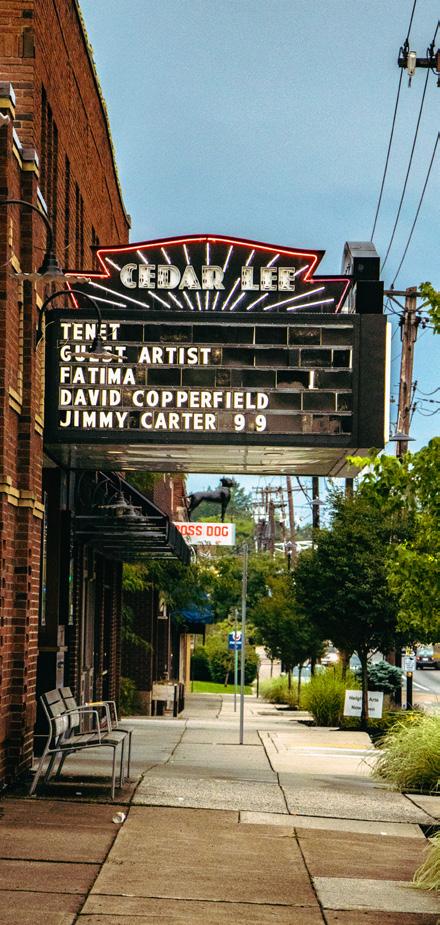
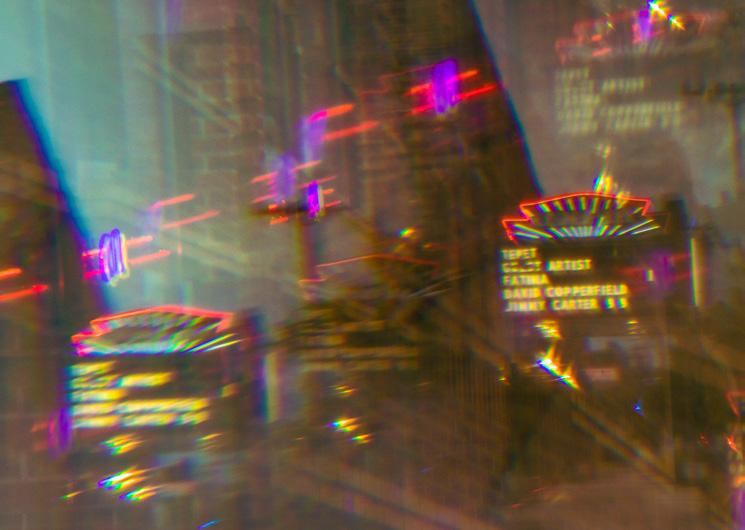
UARANTINE DJ: TRE SMITH
WRITTEN BY
Jake Moore

Cleveland Producer and DJ Tre Smith Streams Live DJ Sets Through COVID-19 Pandemic
In the COVID-19 crisis, music artists all around the world have had to find new ways to get their content out to listeners. With festivals canceled, concert venues closed and social distancing rules in place, this virus has given the face of music a new look. The pandemic has hit the reset button on live music. Anything people were accustomed to when it came to seeing an artist perform in person has been tossed out the window. Drive-in concerts of artists performing are popping up around the country. Musicians have also been posting their own free stay-at-home concerts on YouTube to keep listeners occupied. These video shows are a good way to produce content for viewers at home in the wake of the pandemic, but it doesn’t give the “happening right before my eyes” feeling of a live show. Music lovers have a void in their hearts and are looking for anything to fill it. Since live streaming services like Twitch and Mixer have been flooding the market, some artists have started performing through these services. In particular, DJs have been able to curate whole mixes and perform them live while also interacting with fans. Cleveland-based producer and DJ Tre Smith has been doing these performances since before the COVID-19 pandemic. Smith has now been able to focus on these sets since it is the only way to perform for listeners. “We’re having a creative “ content renaissance right now”
Smith, 24, said, “creatives have been exploring their options in any way they can and are making beautiful things.” “
Smith has established himself in the Cleveland music scene after years of hard work. He has played at venues such as the House of Blues, Grog Shop and many others. In addition to playing his own shows, Smith had a show with his long-time collaborator Young Cap in which they opened for Jack Harlow, who had the number one song in the country at the time with “What’s Popping.”
Smith was able to meet via FaceTime to discuss how he started getting into music, what he has accomplished and how he crafts his DJ sets.
To take it all back to the start, when did you start making music?
Smith: Honestly, I started them both simultaneously in 2010 when I was 15. I quickly noticed that a huge strong suit of mine was that I was always networking. Whether it was in school or out, I always loved getting to know more people. I was young and got lucky because of this too.
Do you remember what drove you towards this career path?
Smith: There was actually this moment when I was really young—maybe nine years old at the time—when I was on a family vacation. We were in Tennessee and I remember picking CDs to play. And all of these older people around me would ask, “Who is playing this?” I would tell them that it was me, and they would always be surprised it was me. They thought a nine-year-old had no business knowing anything about what good music was. I think it subconsciously stuck with me and shaped my life towards that ever since.
Is there a moment in the early stages of your music career that made it seem real for you?
Smith: Yes, I actually had an immense amount of opportunities for someone my age. The one that really did it for me was playing at the House of Blues while I was still in high school.
How did that happen with starting off so young?
Smith: The band I was in at the time actually got picked to participate in the Tri-C High School Rock Off. I need to give a shout out to everyone at Live Nation for putting that event together and believing in me so young. They really opened up our minds to opportunities I wouldn’t think we would have before that time. Things didn’t end up working out with me in a four-person group with all different perspectives and energies being thrown in.
Is that when you decided to start building yourself up in music?
Smith: Being in that group taught me it was hard to keep my personal goals in sight and do what I wanted to do creatively. Even during that time I was in a rock band, I was always making beats and figuring out my craft. I just decided I need to do what I have to do to let these goals come to fruition.
Are you glad that you started young?
Smith: I think it is very important to start young because it gives you all the more time to find yourself and your style. There is a weird part of me that almost wishes I started now. I’ve gone through so many personal hurdles that if I just got all this stuff together, I would be able to focus more. Everything happens for a reason though, so I’m happy I’m where I’m at now.
Have your goals changed since you were young making music versus now?
Smith: Not really at all, actually. I have always wanted to make music that inspires people the way my predecessors inspired me. When I was young, listening to Tyler, the Creator, he showed me that it is okay to be myself in music and to never stop creating and pushing creativity. Now there are modern artists like Khalid that started young and are still making it big. Them inspiring me just makes me want to continue that gift to other people.
What is one highlight of your career you always look back on now?
Smith: One that meant the world to me was getting to work with Mac Miller’s producers ID Labs. We were all working on beats and just having a real positive and good time. I was literally one seat away from Mac Miller at one point and I’ll never take that for granted especially after the tragic passing of him. It was a great opportunity to work with professionals that have made it and just be able to learn.
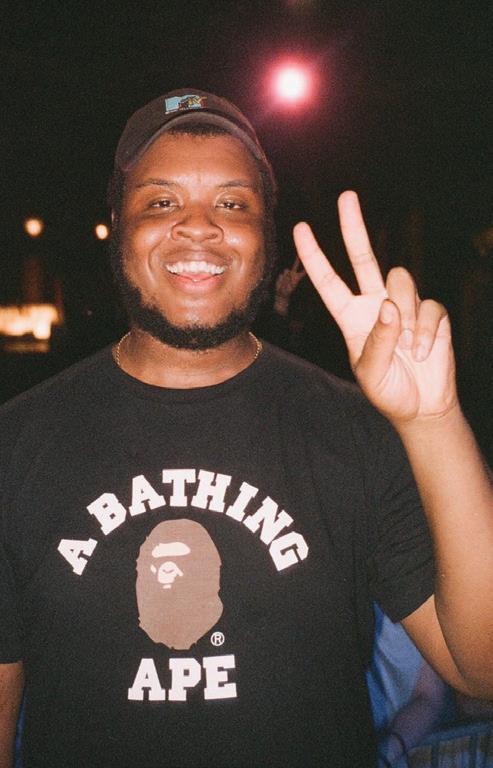
Photo taken by Maclin Bilski
Being a Cleveland artist yourself, do you think it is important to help each other out in the music scene?
Smith: I think that is something that Cleveland’s scene specifically needs to get better at. I don’t think there are enough artists trying to boost each other up. And in turn, that hurts the whole industry in Cleveland. I don’t think there are enough “ artists trying to boost each other up … There needs to be more community-driven events and really strengthen each other. “
There needs to be more community-driven events and really strengthen each other. I have been doing a lot of great work with Young Cap. He is working towards changing up his genre from being known as only hip-hop. He is having a personal renaissance and making really honest and genuine music. DJ EV who is one of my mentors and someone I have always looked up to—he and I are able to actually collaborate now and it’s surreal. There are many more, but people should try to get connected and support these people.
Since the pandemic hit has it been harder to keep up with collaborating with artists?
Smith: Overall, yes. But it has actually given more time to focus on my interests and goals. I have actually been working heavily with my roommate and music artist J-Work. We had a really good summer just stockpiling a bunch of records and a bunch of songs we are very proud of. He and I have a lot of good stuff coming out soon we can’t wait to share.
Do you remember what was going through your head when the stay at home order went into place?
Smith: The most wild thing to me is that I had a DJ show at 1899 in Downtown Willoughby that was packed to the brim just two days before that happened. All I could think about is that I hope everyone that was there is safe. I don’t want my fans, casual listeners that just came out or even myself to be hurt from that. It was a lot to process and I’m just glad I never heard anything bad happening from it.
Has this stunted your growth as an artist?
Smith: I’m going to be honest. I can’t speak for every musician out there but personally it was a new opportunity for me. I have been able to learn more and focus my energy on the things I have personally wanted to do. For instance, with DJing, I haven’t been hired for a gig where the people want a certain type of music being played so on these online sets I have been curating mixes and sets that speak to my creative taste. It has been a weird time but good for me as well.
Can you take us through your process of making your online DJ Sets?
Smith: It was different, but these days when I’m starting with the music, it no longer is all thoughtout and hard work. The songs and vibe just kind of subconsciously happen. I just sit down to start and before I know it I have a mix or a vibe I can ride all night. The most important thing for live DJ sets is the visuals. Before, when live shows were happening, I would just put my phone up, have my speakers loud and play it through that. I realized I wanted to make a quality stream so I found out about this program called OBS where you can put graphics and text on the screen, have multiple camera views and use green screens. With the combination of that program, putting multi-colored lights in my room, and setting up a chat in the stream for viewers that is essentially all the components to my Live DJ sets.
With chats on streams, it has brought in an in-person aspect to the audience. How do you feel about this feature on streams?
Smith: I think it is a great tool for the audience and I to engage with each other again. When I stream on Facebook, Twitch, Twitter or Periscope, I have it set up to where I get all them sent to me in one place. I have a mic set up where I can just talk to the comments I see coming in from there. I’m not Steve Aoki, so I can actually talk to someone in these sets. I was on Periscope really early in the morning once and there was just one guy watching me. I was asking him what he wanted to hear, and I ended up just DJing for him. I wasn’t trying to get my personal flare out instead I was able to give him a personalized experience which is something we couldn’t do before.
Do you now have a preference between online and in person DJ sets?
Smith: They both have pros and cons so I don’t think I could just definitively pick one that is better, but I will say, I have been enjoying the freedom in the online sets. I have been able to totally control the visuals happening on the sets which is a key factor. I love the free range of songs I have been able to do now as well.
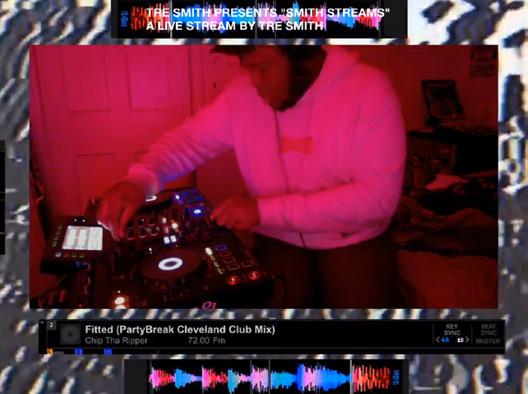
Live Stream capture taken from Tre Smith's Instagram (@TreSmithers)
What puts your online sets apart from others?
Smith: There can be so much detail in that but overall, I think it’s that I am not going for a genre-niche audience when I do them. On the last stream I did, I was mixing Kid Cudi’s very first mixtape that isn’t even on streaming services with The Box by Roddy Rich. I am making a melting pot of beautiful combinations to listen to.
Do you have anything coming up that you want readers to know about?
Smith: There is just so much content in general I am working on that I’m excited to get out. I’m taking some time off of social events that are even allowed to happen to just focus on content to get out to listeners. I have been making a lot of beats and doing studio work with artists across the country and I’ll have so much in store before 2020 ends.
Be sure to follow Tre Smith and his work at tresmith. com where you can find links to his social media and the creative content he’s putting out.
Photo taken by Karli Kaufman











